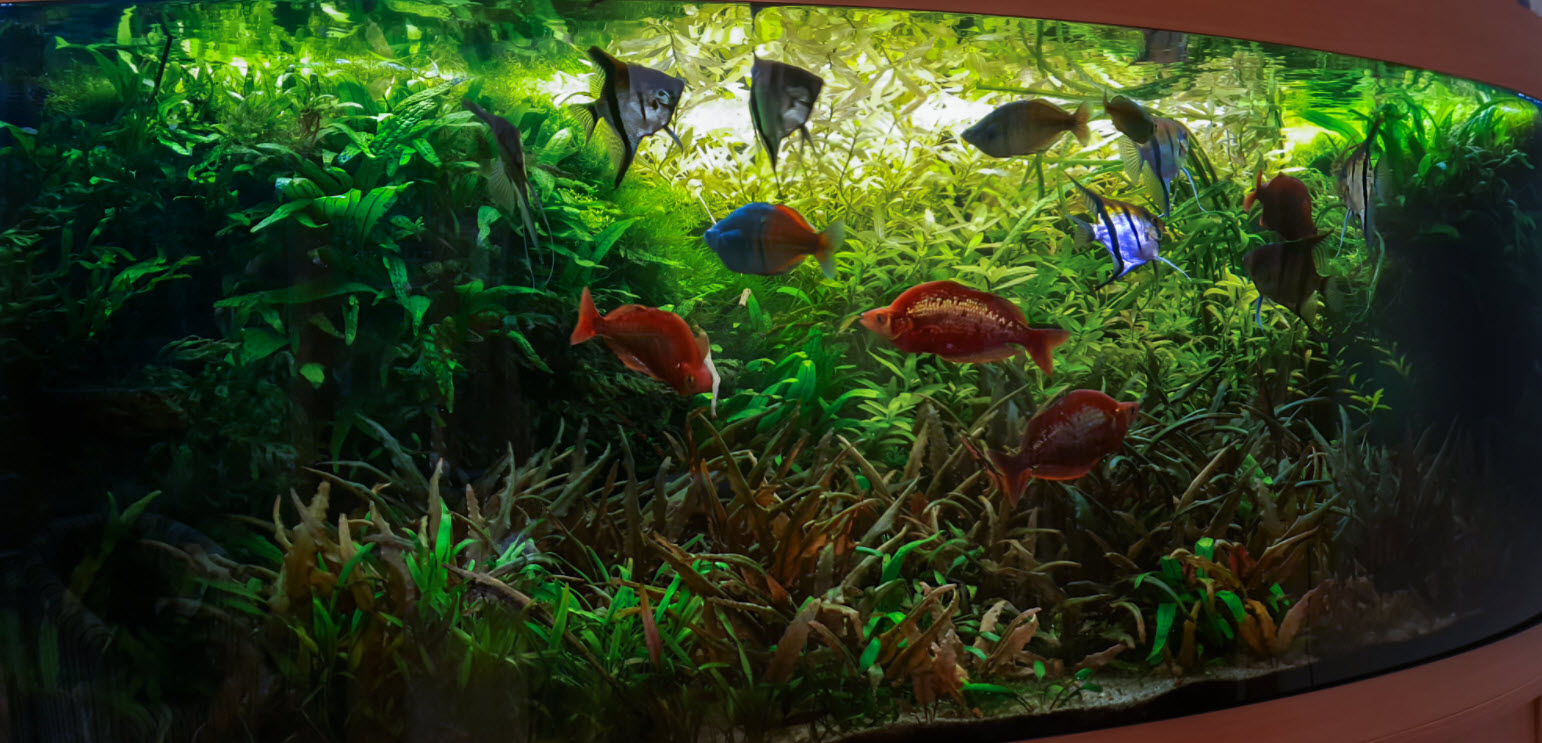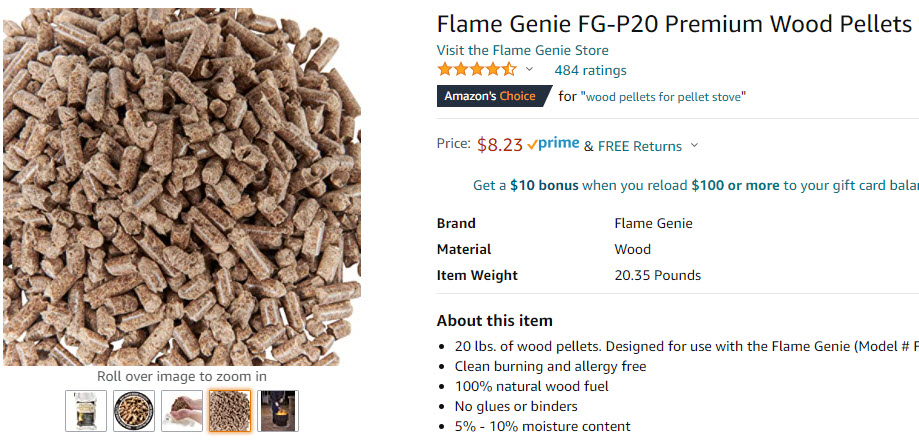To have a good well planted aquarium it is necessary to have a LOT of THRIVING plants. These thriving plants put out chemicals which control algae quite effectively. But a few plants here and there in an aquarium typically will simply not do well.
For an example let’s take a sixty-gallon aquarium. Let us add six different species of plants into an aquarium at a density of one plant per ten gallons. Of the six plants in our example two die back in the first month to stubs, two do nothing and two begin rapidly growing. This is quite normal.
The beginner adds the recommended dose of a complete fertilizer twice a week, just like the directions say. Because they are way over fertilized the two stubs and the two plants doing nothing die completely. But there are several species of algae in the tank that love an excess of nutrients and they flourish. And the two plants remaining struggle because they are getting the fertilizer loading for about fifty plants. Finally, they die, covered in algae. And the hobbyist is puzzled as to what happened. After all, “I fertilized per the directions“.

The aquarium up above will have difficulty making it through the next few months. The problem is that there are just too few plants to prevent algae from taking over the tank.
Experienced hobbyists who put together the beautiful high tech planted aquariums which are wall to wall with plants all either raise or buy plants in large quantities. They would plant this sixty-gallon aquarium with ten plants of each species. They would slowly ramp up the fertilizer along with the lighting and CO₂.
If one only has a limited budget and cannot buy sixty plants at once (at $8 per plant that is $480) one can raise the plants. But note that takes some thought. Here we will tell you how to do this.

How to Propagate Aquarium Plants.
Let us continue the above six plant example. We take six one-gallon polyethylene jugs (“milk” jugs) and cut off the top four inches or so. We add roughly one inch of sand and fill with water. We add some garden soil, compost and/or pond mud to each container to get the right biodiversity the plants need. We plant the six plants into the jugs, one plant to each jug.
Then we prepare the lighting. If we have a North or East facing windows, we can use them (unless it is winter outside!). Or we can use LED lighting. If we use windows, we need to tack two layers of sheets over the window to reduce the amount of light. If we use LEDs we need to use 30% power rating to start, or a distance of two feet if the LEDs cannot be programmed down in power. Time the LEDs for ten hours of light.
Then place the jugs in the windows or under the LED lights. And then simply wait two weeks. At the end of two weeks, look for new growth on the plants. If there is no new growth, simply wait two more weeks and check again.

At some point there will probably be new growth in one or more of the jugs. At this point, with ONLY the jugs putting out new growth, very lightly fertilize at 6% of recommended dose. This won’t be a lot! This container is only roughly half a gallon of water.
At the end of two weeks, change out ALMOST ALL the water in the jugs which have been fertilized and add new fertilizer to new water. Change out the water and fertilize every two weeks, going from 6% to 8% to 12% to 18% to 25% to 37% to 50% to 75% to 100% fertilizer dosage over a span of four months. Only fertilize jugs with new growth. Note that some plants will do nothing for months. Some plants will die back then come back strong. And some plants will die back and die. That is just the way it is. Accept it and move on.
After two months of fertilizing a given jug, increase the light going to that jug. Remove one layer of sheeting if in a window. Or take the LEDs to 60% power. Or raise the plant to within one foot of the LEDs if under lights. Do not increase the lighting to any jugs which have not been fertilized at least two months. This may take some thought and re-arranging.

After two additional months of the higher lighting, go to full lighting with removal of the sheet altogether. Or take the LEDs to 100%. Or take the plants to eight inches from the LEDs. Again, ONLY do this with plants that have been fertilized for four months. If lighting with LEDs go to 14 hours of lighting with ONLY these jugs.
Then simply continue to change the water and add the recommended amount of fertilizer and watch the plants grow till they are large enough to trim. Note most plants require trimming and planting of the trimmings to get really good propagation.
Use a complete aquarium fertilizer like Aquarium Co-op’s Easy-Green or the homemade versions for epiphytes in the article below on Do-it-yourself Aquarium fertilizers. Note that the dosing will require some math skills.

Getting a Little Nuts
OK, now I’m going to get a little crazy. If you really want to raise good plants think of wood pellets and carpets of white water mold. There is a product made for wood stoves and in smaller much more expensive amounts for smoking meat in a barbeque which is called “wood pellets’ This is what it looks like:

When they are put in water these pellets break apart into small pieces of compressed wood which does not float. If you put a small handful of these wood pellets into the substrate in your miniature propagating container they will go to the bottom of the container when water is added. Over the course of a few days, a thick moldy white carpet will form on the wood chips. The white might go brown or even a little green as diatoms or green algae grow in it. This white stuff is something called water mold and is great for the plants.
Water mold is an organism which eats the cellulose in the wood and creates carbon dioxide. The garden soil, compost and/or pond mud added above will add a whole lot of little organisms which will eat the water mold and produce carbon dioxide. The plants will love the carbon dioxide.
The water mold will benefit from small amounts of fertilizer added every few days or even every day as it needs nitrogen and phosphate. Note it doesn’t need the potassium that vascular plants need. One drop of any of the homemade fertilizer recipes or any commercial fertilizer like Aquarium Co-op Easy Green per day per container is fine. Even a few drops of any soluble garden fertilizer is fine.
In addition to a white carpet the container might get cloudy water or green water. It might also get little crustaceans and worms moving about. Ignore all this. The plants will benefit from the carbon dioxide all these things produce. Do not panic! Getting used to the idea of a white carpet of mold being good for plants takes a little “paradigm shift” for most of us.



